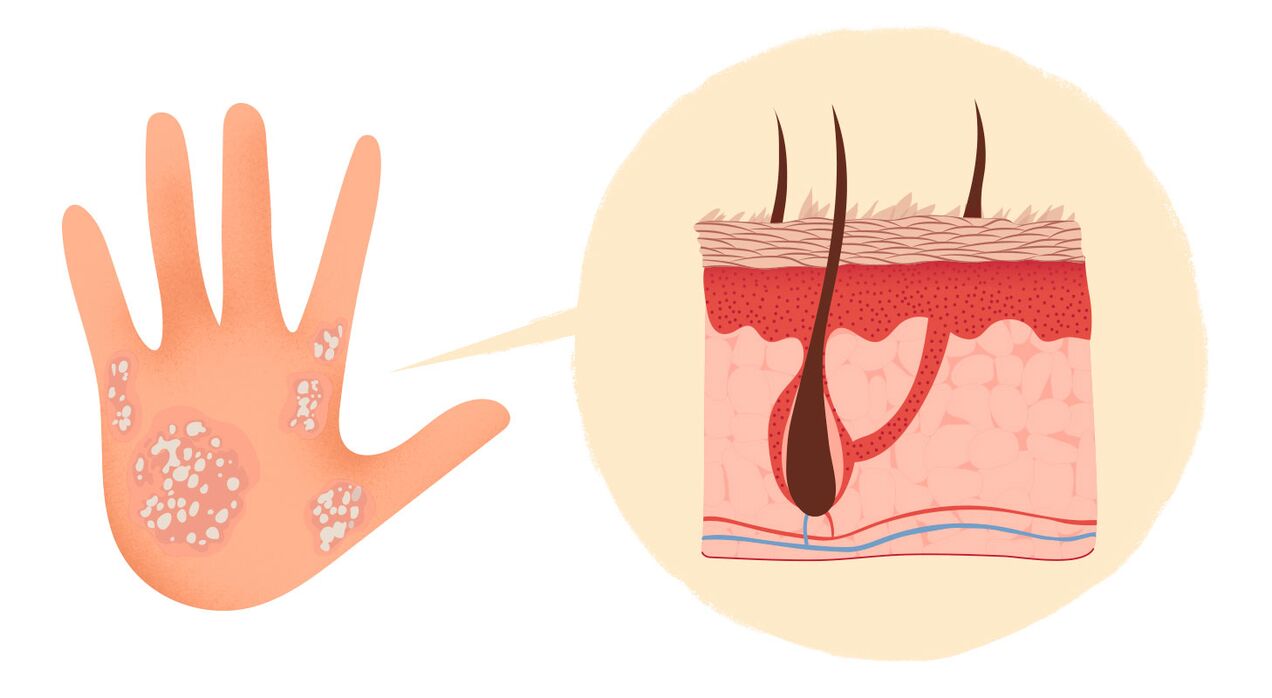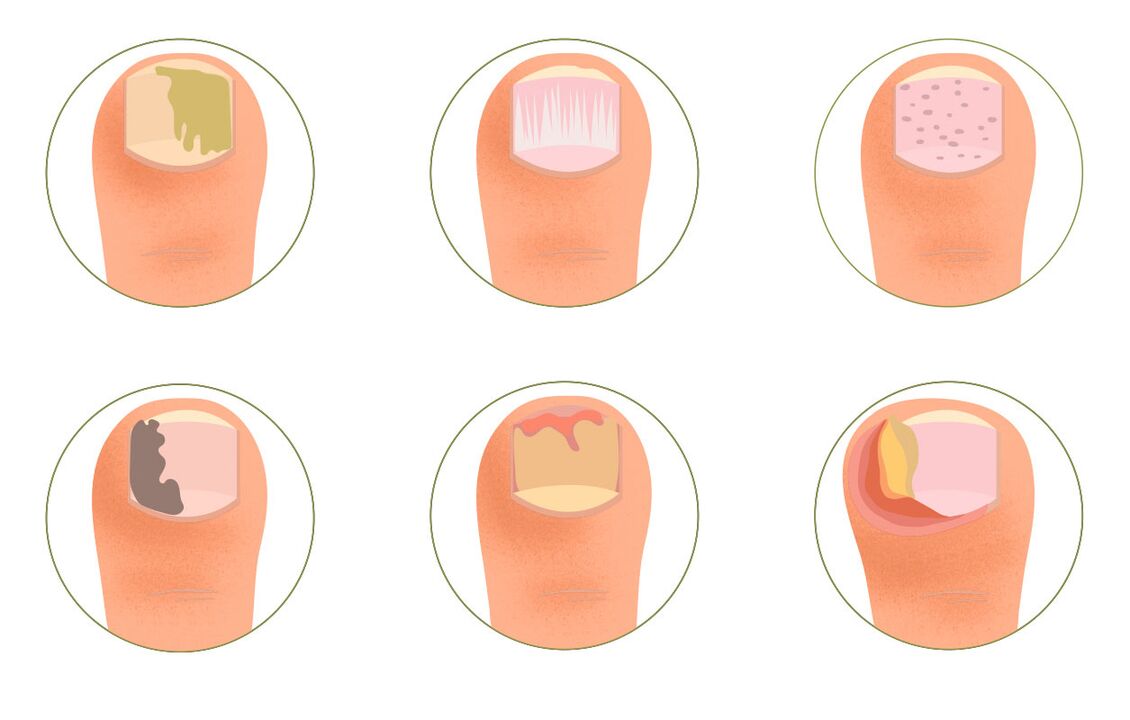
The most common symptom of psoriasis is the formation of psoriatic plaques, which are formed from inflamed areas of the skin. However, the disease can affect more than just the skin. We understand how psoriasis begins, how it progresses and what the signs of psoriasis are.
Most often, the first symptoms of psoriasis appear at a young age, but psoriasis can precede a person even in old age. The first symptoms of psoriasis may be minor: the disease may begin with lesions on small areas of skin, often on the folds of the limbs or scalp. Therefore, many patients may not notice the first signs. Does the skin itch with psoriasis? Indeed, one of the signs of psoriasis is itching. In addition, in the beginning a person may feel only itching and tightness and only then red spots begin to appear on the skin.
The course of psoriasis strongly affects the quality of human life. Many patients experience not only physical but also psychological discomfort. However, modern medicine can effectively control the manifestations of the disease. New drugs for psoriasis developed in the 21st century, in particular genetically modified biologics (GIBPs), allow you to completely get rid of the symptoms of the disease and lead a productive life.
What is psoriatic plaque?
Psoriatic plaques are the most common symptom of psoriasis. Plaques are enlarged, inflamed areas of red skin that protrude above the surface of healthy skin and are covered with a layer of whitish scales. The plaque can be painful, itchy, cracked and bleeding.

Psoriasis. Signs
Manifestations of psoriasis on the skin and nails
Leather
- Inflamed plaques with redness.
- Plaques are often covered with whitish scales.
- Plaques can be painful and itchy.
- Sometimes they crack and bleed.
- Scattered plaques may appear on the scalp.
- Plaques can grow and merge with each other, covering a large area of skin. In severe cases, the whole skin is one big plaque. This condition is called erythroderma.
Nails
- Nails change color or dents, dots or streaks appear on the nail plates.
- Over time, the nail thickens and changes color to grayish, yellow or brown. It may collapse and bleed.
- The nail may peel and peel off. The skin under such a torn nail is thickened due to the formation of psoriatic plaque here.

The most common symptoms of psoriasis
Itching and bleeding with psoriasis
Itching and burning of the skin are common symptoms of psoriasis, affecting 90% of patients. Itching caused by psoriasis is different from itching caused by other skin conditions. Itching in psoriasis can be very intense and even appear on those areas of the skin where there are no visible plaques. Scratching the skin as a result of itching in psoriasis can lead to new rashes as a result of mechanical trauma to the skin.
The appearance of cracks on the skin and bleeding in psoriasis
Psoriatic plaques can appear anywhere on the skin. Sometimes they crack as the skin becomes very dry on the plaque. As the poster grows, the cracks widen. As they enlarge, they can penetrate deeper into the dermis, the layer of skin where the capillaries are located. Then the capillaries are damaged and burst, and the plaques begin to bleed.
The first symptoms of psoriasis can appear anywhere, but more often the skin begins to crack and bleed. Location of events:
- elbows;
- knees;
- brushes;
- palms and soles.
Pustules with psoriasis
Pustules with white or yellowish fluid inside, appearing on psoriatic plaques, are the main symptom of pustular psoriasis. This is a rare form of psoriasis and only 2% of patients develop pustules. Pustular psoriasis is a very dangerous condition. It can cause serious complications, which is why it requires urgent complex treatment and referral to a specialist.
How do pustules form? How does pustular psoriasis begin?
- First, pustular psoriasis produces plaques formed by dry, reddened skin that is painful to the touch.
- Then pustules filled with pus form on the plaques.
- The pustules quickly merge with each other, forming large blisters.
- They then dry out and separate, leaving dry skin underneath, on which they may soon reappear.
Tear plaques for psoriasis
Small reddish or pink scaly nodules - spots on the skin that look like drops - are a symptom that distinguishes drip psoriasis. The patient may experience several to hundreds of teardrop-shaped elements. Nodes all over the skin, but most often appear on:
- shoulders;
- stomach;
- back;
- hands;
- legs;
- scalp;
- ears;
- face.
The symptoms of guttate psoriasis develop quite rapidly, over several days. Sometimes droplet plaques cause itching in psoriasis. Usually such elements are small, not more than 10 mm wide.
Often, droplet psoriasis breaks out after an infection, mainly of the respiratory tract.
Soreness in psoriasis
Pain in the projection of the rash occurs when the skin is damaged and cracked as a result of excessive thickening caused by inflammation and rapid growth of keratinocytes. As a result, the nerve endings in the dermis are irritated and send a pain signal to the brain.
But the pain doesn't just come from mechanical damage to the skin: the inflammation that occurs in the body with psoriasis affects the way the brain perceives pain. In addition, each person has an individual threshold for sensitivity to pain, so pain in patients with the same picture of the disease can cause a different reaction.
42% of patients complain of pain in the projection of lesions caused by psoriasis. To a greater extent, this symptom is common among:
- Women;
- old people;
- patients with severe psoriasis;
- patients who have had psoriasis for a long time;
- patients with concomitant psoriasis.
Peeling (dandruff) with psoriasis
Scalp psoriasis plaques are hidden and may not be visible. However, as with other areas of the body, psoriatic plaques flake off to form dandruff-like scales. Do not confuse psoriasis flaking with dandruff, as dandruff is caused by a fungal infection and psoriasis is caused by inflammation. Therefore, these symptoms need to be treated in different ways.
Like other symptoms of psoriasis, scaling occurs during exacerbations and disappears during remission. Exacerbation of scalp psoriasis occurs for various reasons:
- cold weather;
- dry air;
- stress.
Comment on what to do when flaking and inflammation appear in psoriasis
Changes in nails with psoriasis
- Half of patients with psoriasis develop nail psoriasis, and in patients with psoriatic arthritis this symptom occurs in 80% of cases. As a rule, the defeat of the nail plates precedes the development of psoriatic arthritis.
- Nail psoriasis usually accompanies other types of psoriasis on the skin. Only 5-10% of patients with nail psoriasis do not have skin lesions.
- Nail psoriasis occurs in different patients, regardless of their age, gender or duration of the disease.
- The changes may affect all or part of the nail plate. They appear on one or several nail plates and more often on the hands.
- Nail psoriasis usually accompanies common (vulgar) psoriasis and psoriatic arthritis.
- Psoriasis affects the condition of the nails in different ways. They can grow faster or become thicker. The nail plate often turns white, yellow or brown.
- Thimbles and thimble-shaped streaks appear on the nail.
- With the progression of the psoriatic process, the nail begins to deteriorate and eventually rejects, losing touch with the nail bed.
- Nail damage causes unpleasant and painful sensations that significantly reduce the quality of life.























